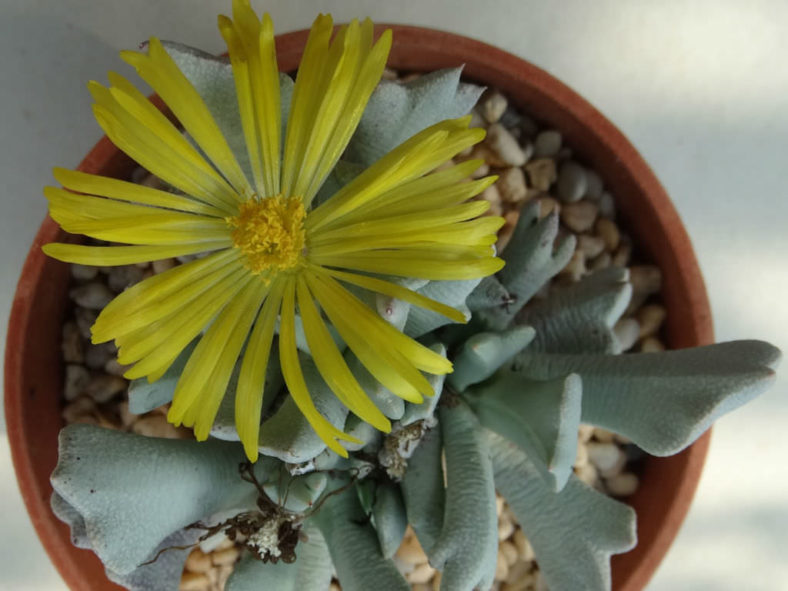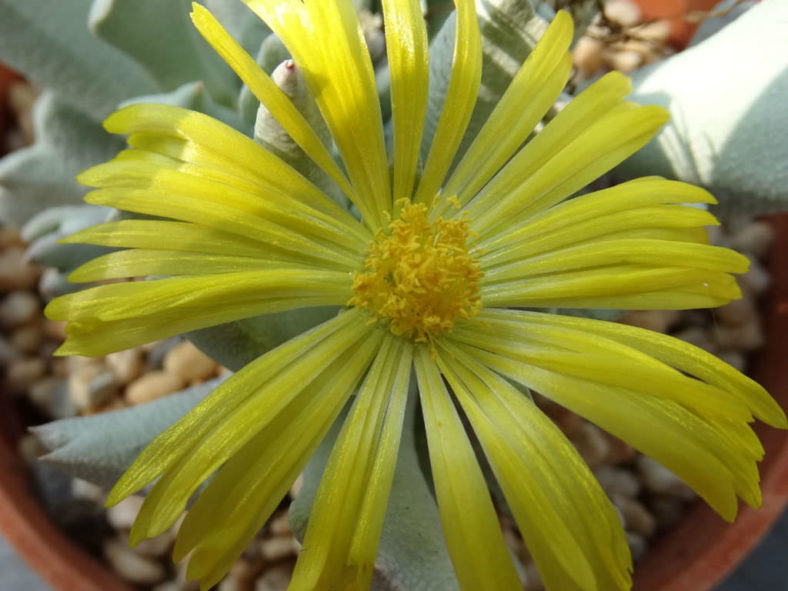Scientific Name
Schwantesia borcherdsii L. Bolus
Scientific Classification
Family: Aizoaceae
Genus: Schwantesia
Etymology
The specific epithet "borcherdsii" (pronounced "bor-KERD-see-eye") honors Miss Borcherds, a South African collector in Namaqualand who sent specimens of the species to Gustav Schwantes.
Origin
Schwantesia borcherdsii is native to South Africa. It grows cracks in boulders and other out-of-the-way, rocky hideouts near Upington in the Northern Cape province.
Description
Schwantesia borcherdsii is a small succulent with fleshy, smooth, bluish-green leaves that have a flat upper surface, a keeled lower surface, and occasionally reddish-tinged margins. It can grow up to 2.4 inches (6 cm) tall, while the leaves can measure up to 1.6 inches (4 cm) in length and 0.8 inches (2 cm) in width at the widest point. The old leaves shrivel and die as the new pairs grow.
The solitary yellow flower can reach a diameter of up to 1.8 inches (4.5 cm) and open during the day.

How to Grow and Care for Schwantesia borcherdsii
Hardiness: USDA hardiness zones 10a to 11b: from 30°F (-1.1°C) to 50°F (10°C).
Mesembs are primarily adapted to relatively predictable rainfall patterns rather than extreme drought and irregular rainfall. Total rainfall may be extremely low, but water is available at least seasonally or through fog and condensation. This leads to or allows plants that are not especially large and sometimes very small, which affects how they must be treated in cultivation.
The basics of care are very simple: free-draining soil, plenty of sun and ventilation, and regular light watering in the right season. Yet the difficulties are endless, trying to adapt to the Mesembs' adaptability and follow their growth habits in your particular conditions.
These plants require a loam-based compost with extra drainage material such as horticultural grit or perlite. They all like good light conditions and plenty of ventilation.
Some are relatively cold-hardy and can even survive mild winters outside. Most will survive temperatures down to the freezing point. Some Mesembs begin to grow in the fall as the temperature drops and the days get shorter.
Learn more at How to Grow and Care for Mesembs.
Links
- Back to genus Schwantesia
- Succupedia: Browse succulents by Scientific Name, Common Name, Genus, Family, USDA Hardiness Zone, Origin, or cacti by Genus
Photo Gallery
Click on a photo to see a larger version.


